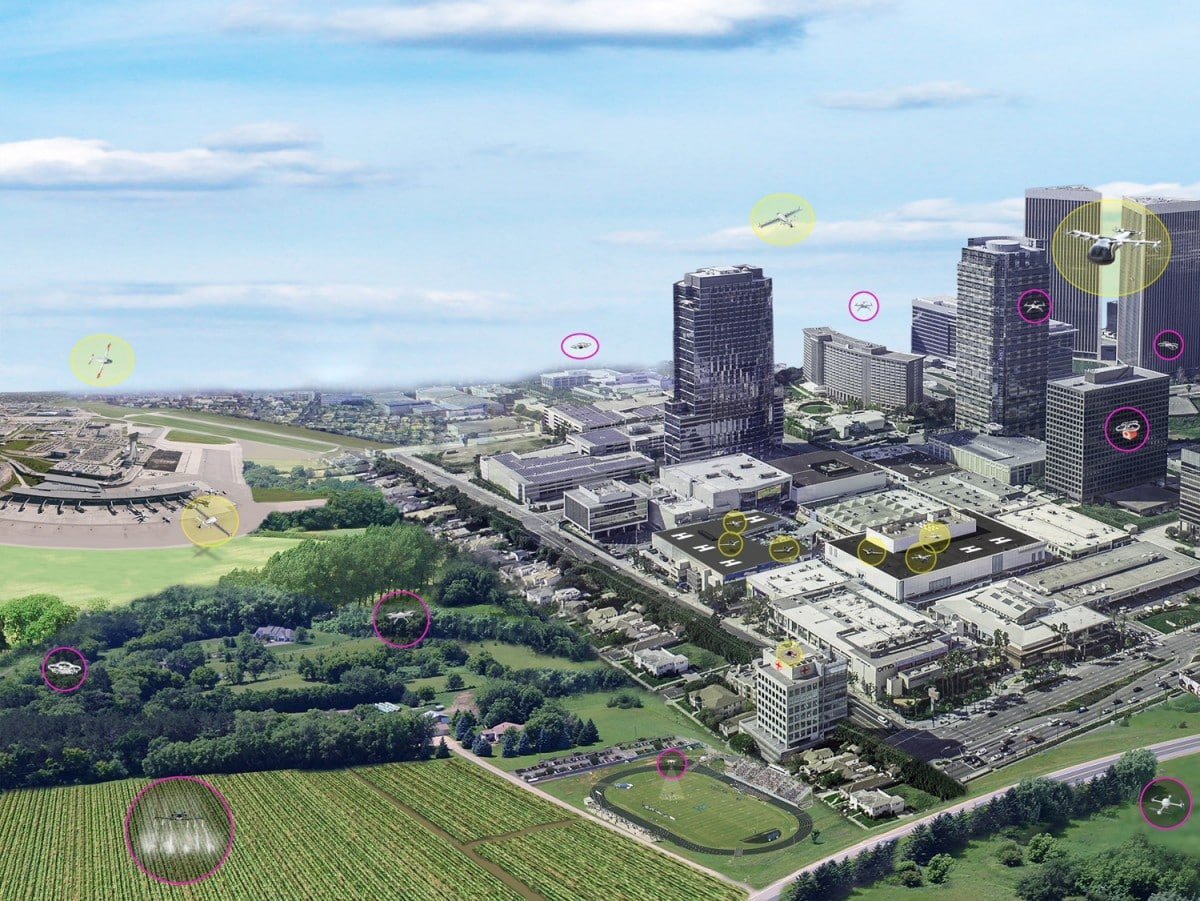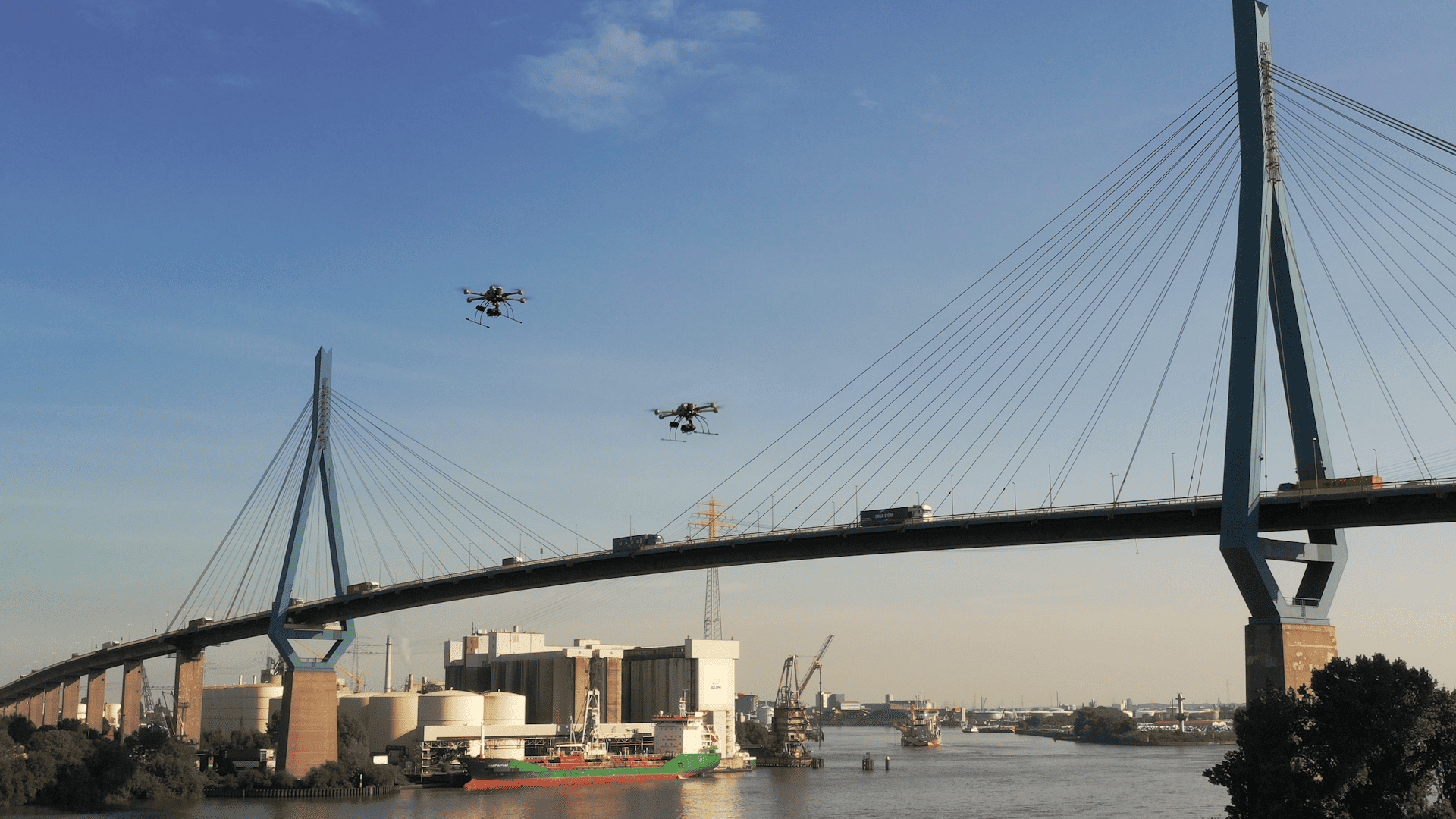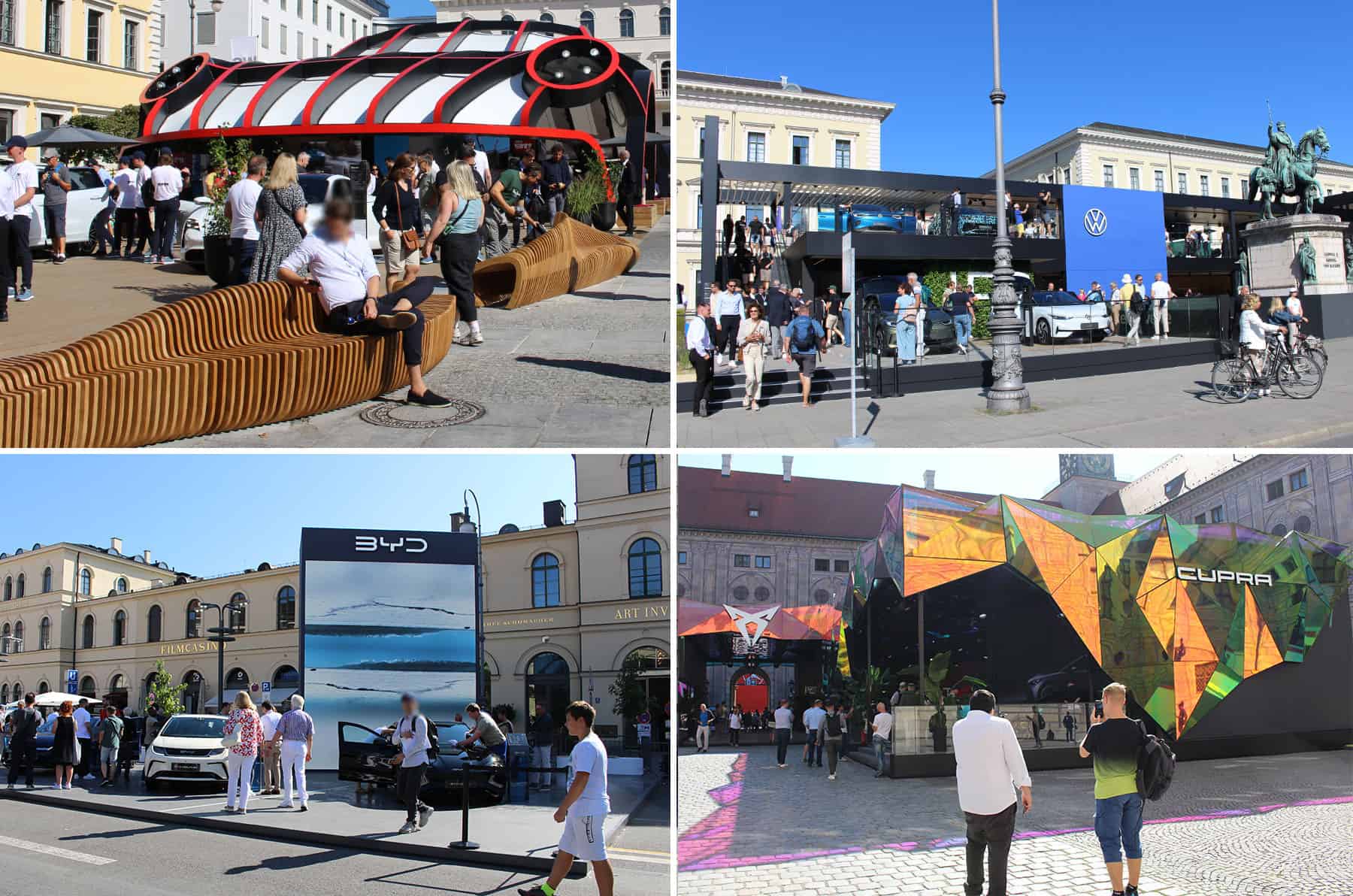
Commuting by small plane? Or get on an air taxi in Blankenese to quickly get to Fuhlsbüttel Airport? That could be the future of air traffic above the Elbe metropolis. Scientists at the Institute for Air Transport Systems of Hamburg Technical University (TUHH) and the German Aerospace Center (DLR) have recently presented a concept for urban air mobility over the Hanseatic city. The researchers led by Professor Volker Gollnick not only looked at the urban area itself, their study entailed the entire metropolitan region of Hamburg. This extends as far north as Dithmarschen and in the south as far as Lüchow-Dannenberg.
An air taxi network for Hamburg?
Volker Gollnick’s team looked at quite a number of small aircraft designs for their study. They took a close look at not only vertical take-off aircraft designs by Airbus ,Volocopter or Lilium but they were also interested in autonomous drones carrying freight or passengers. However, there is not enough reliable data on these aircrafts. So they used a generic air taxi model for their studies. Important questions were noise pollution, speed, air traffic density and suitability as a business model. They also examined the most likely public responses.
Around 500,000 people commute to and from Hamburg every day. In their study, the scientists assumed that one percent of these commuters would switch to air taxis. This would mean that around 4500 additional flights a day would transit the airspace above Hamburg. The concept would be feasible, but would hardly affect the situation on the ground. “The traffic chaos on the ground cannot be eliminated by air taxis,” says Professor Volker Gollnick. The number of flights is too low for that. “The air taxis are an additional offer,” says Gollnick.
Air taxis: Faster than ground traffic

Illustration: Airbus
In the urban area, faster travel times are quite possible. There is enough economic potential to operate an air taxi network successfully. “Air taxis can save about half the travel time on many routes in Hamburg,” says Gollnick. According to initial findings, Hamburg’s airspace offers sufficient capacity to cope with a massive increase in the number of commercial aircraft movements per day. These would come on top of the 400 or so that are normal today. Additionally, there is enough space in the city to set up take-off and landing platforms.
Air taxis would only have to be faster than ground traffic – flying at speeds of around 100 km/h. They could be located at intervals of a few hundred meters. The resulting aircraft noise would be around 75 dB, which would correspond to dense road traffic. However, Gollnick advocates flying taxis and drones in air corridors that follow the main traffic arteries. This would keep the additional noise to a minimum.
Further research required
According to Gollnick, a local or regional authority should be in charge of monitoring and control of urban air traffic. So far, however, there is a lack of suitable flight guidance and monitoring systems. In their investigations, the scientists found that the population is skeptical about autonomous aircraft with passengers, but not about air taxis with pilots.
As a next step, the researchers want to establish how severe the noise pollution would really be. It would also have to be clarified what the actual costs for aircraft and infrastructure would be and whether the population would accept aircraft noise. Only then will it be possible to make recommendations to politicians for action.








